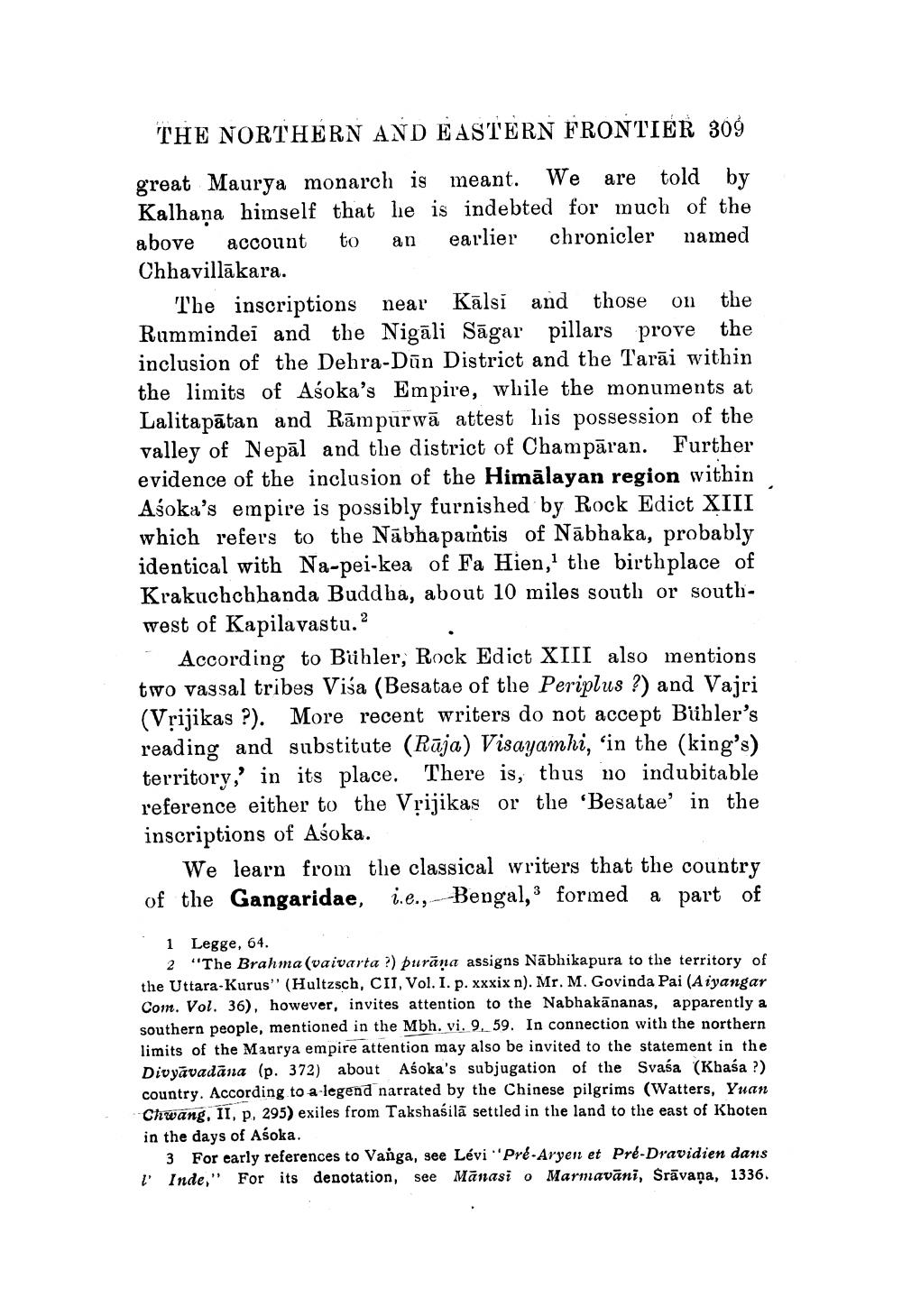________________
THE NORTHERN AND EASTERN FRONTIER 309
We are great Maurya monarch is meant. told by Kalhana himself that he is indebted for much of the above account to earlier named chronicler
an
Chhavillakara.
The inscriptions near Kalsi and those on the Rummindei and the Nigali Sagar pillars prove the inclusion of the Dehra-Dun District and the Tarai within the limits of Aśoka's Empire, while the monuments at Lalitapatan and Rampurwa attest his possession of the valley of Nepal and the district of Champaran. Further evidence of the inclusion of the Himalayan region within Aśoka's empire is possibly furnished by Rock Edict XIII which refers to the Nabhapamtis of Nabhaka, probably identical with Na-pei-kea of Fa Hien,' the birthplace of Krakuchchhanda Buddha, about 10 miles south or southwest of Kapilavastu.2
=
According to Bühler, Rock Edict XIII also mentions two vassal tribes Visa (Besatae of the Periplus ?) and Vajri (Vrijikas ?). More recent writers do not accept Bühler's reading and substitute (Raja) Visayamhi, in the (king's) territory, in its place. There is, thus no indubitable reference either to the Vrijikas or the 'Besatae' in the inscriptions of Aśoka.
We learn from the classical writers that the country of the Gangaridae, i.e., Bengal, formed a part of
3
1 Legge, 64.
2 "The Brahma (vaivarta ?) purana assigns Nabhikapura to the territory of the Uttara-Kurus" (Hultzsch, CII, Vol. I. p. xxxix n). Mr. M. Govinda Pai (Aiyangar Com. Vol. 36), however, invites attention to the Nabhakananas, apparently a southern people, mentioned in the Mbh. vi. 9. 59. In connection with the northern limits of the Maurya empire attention may also be invited to the statement in the Divyavadana (p. 372) about Aśoka's subjugation of the Svaśa (Khasa?) country. According to a legend narrated by the Chinese pilgrims (Watters, Yuan Chwang, II, p. 295) exiles from Takshaśila settled in the land to the east of Khoten in the days of Aśoka.
3 For early references to Vanga, see Lévi Pré-Aryen et Pré-Dravidien dans l'Inde," For its denotation, see Manasi o Marmavānī, Šrāvaṇa, 1336.




